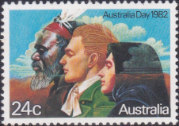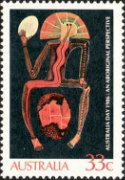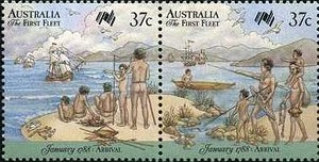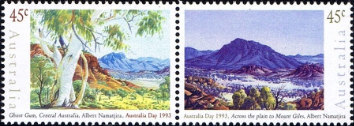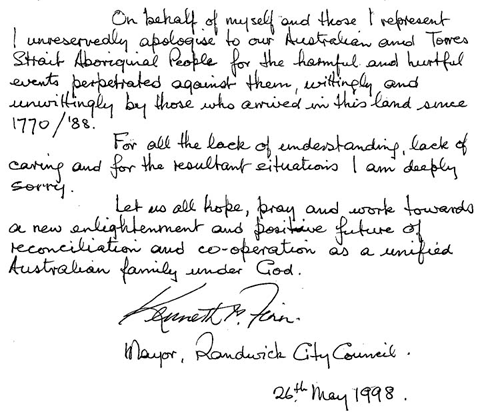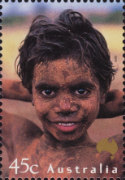History
Timeline results for 1400 to 2022
Found 55 results for your search. Showing page 1 of 3.
Year from 1400, year to 2022, month is January
1788
-
Captain Arthur Phillip raises the Union Jack at Sydney Cove to start a penal colony (and not a nation). Aboriginal resistance flares within a few days of arrival of the tall ships.
1813
-
Bennelong, aged 50, dies at Kissing Point, Putney, NSW, on the banks of the Parramatta River.
1838
-
Major Nunn’s campaign. Mounted police, mostly European volunteers, set out in response to conflict on the Liverpool Plains, north central NSW. At Vinegar Hill, a site on ‘Slaughterhouse Creek’, 60 - 70 Aboriginal people are reported killed. The only European casualty is a corporal, speared in the leg.
1901
-
Federation - The Commonwealth Constitution states "in reckoning the numbers of people… Aboriginal natives shall not be counted". It also states that the Commonwealth would legislate for any race except Aboriginal people. This leaves the power over Aboriginal Affairs with the states.
1905
-
Walter Roth, Chief Protector of Aborigines in Queensland, who had been appointed to work for the Royal Commission on the Condition of the Natives, releases his report. Although mild in his criticism, the report stirred a vast response in the press with many articles reporting about the "slavery" in Western Australia. Roth's findings led to the passing of the Aborigines Act 1905 in December that year.
The full report is available on the website of the Western Australian Parliament.
1936
-
Torres Strait Islanders unite in the Maritime Strike, protesting against poor working conditions of pearl divers and for the Islander’s right to determine how they spend their wages and to control their own affairs. The strike is about equality and autonomy. Islanders used ingenious methods to organise the strike to avoid detection, such as submerging messages for pearl divers or talking in language. The strike lasted 9 months and eventually led to the Queensland government passing the Torres Strait Islander Act 1937 giving legal recognition to Torres Strait Islanders as a separate Indigenous people.
1938
-
150 years after European occupation the Aboriginal Progressive Association declares a Day of Mourning. It holds a conference in Sydney, a landmark meeting of Aboriginal peoples, to bring attention to the plight and imposed conditions of Aboriginal people, and campaign for full citizenship and land rights. This is the first of many Aboriginal protests against inequality, injustice, dispossession of land and protectionist policies, and is considered the start of the Aboriginal political movement.
1972
-
Aboriginal activists pitch an Aboriginal Tent Embassy outside Parliament House in Canberra, demonstrating for land rights.
1982
-

The Australia Day 1982 stamp tried to convey a sense of unity of diverse Australians. A stamp for Australia Day shows the head of an Aboriginal man, along with that of a European colonist and an immigrant. The stamp's design symbolises the three waves of migration to Australia: Aboriginal people from south-east Asia, the British and European post-war immigrants.
1986
-

A Wandjina spirit protects the land. This stamp issue shows the continent of Australia cradled and protected by a Wandjina spirit. He holds a second egg in his hand, a symbol of perfection and rebirth. It also refers to the unbroken (and still misunderstood) Aboriginal spirit and how the land owns its people.
1988
-

Aboriginal people's reception of the First Fleet was not as passive and peaceful as shown here. Two stamps of the Australia Day issue show an Aboriginal family watching the arrival of the First Fleet. They are relaxed and just looking on, a misrepresentation of the resistance Aboriginal people showed when they first encountered the British.
-
Tens of thousands of Aboriginal and Torres Strait islander people march through the streets of Sydney on Australia Day to celebrate their survival during the previous 200 years, while non-Aboriginal Australia commemorates the bicentenary of their immigration. Aboriginal people rename the day ‘Survival Day’.
1992
-
The remains of Mungo Lady return from the the Australian National University to a temporary keeping place at Lake Mungo [1] in south-western New South Wales, the land of the to the Paakantji, Mathi Mathi and Ngiyampaa people. The remains are said to be the oldest human remains to be found anywhere in the world that had been ritually cremated.
-
The first Survival Day concert is held in Sydney.
1993
-
To celebrate the International Year of Indigenous People, Australia Post issues two stamps for Australia Day that celebrate Aboriginal painter Albert Namatjira and his watercolour style. The stamps show a ghost gum and Mount Giles.

Albert Namatjira was famous for his use of water colours.
1994
-
Native Title Act 1993 becomes law.
-
For the first time, Australia Day is celebrated nationally on the same day. Previously, states and territories had their own individual days.
1995
-
Justice Drummond in the Federal Court makes a decision that the claim of the Wik and Thayorre Peoples could not succeed over the areas that were subject to pastoral leases. The judge’s reason was that he considered that the grant of pastoral leases under Queensland law extinguished any native title rights.
1998
-
Australians for Native Title (ANT) launches the Sorry Books campaign, an opportunity for everyday Australians to give a "people’s apology" for past wrongs to Aboriginal people in lieu of the federal government's refusal to make a formal apology to the Stolen Generations. ANT circulated about 1,000 books over four months in libraries, museums, churches, shops, art galleries and schools.
The UNESCO added the collection of Sorry Books to its Memory of the World Register on 10 August 2004, in recognition of their historical and social significance.


Sample Sorry Book entries. Children, celebrities, migrants and visitors alike signed Sorry Books. [2]
2000
-

Portrait of young Cyril Watson. One of the 25 unique photographs of Australians from everyday life in the Faces of Australia issue is Cyril Watson, a young girl from remote Central Australia.
References
View article sources (2)
[1]
'Return of Muno Lady', Alice Kelly, in: Nelen Yubu, Issue 51/153 p.10 (Missionaries of the Sacred Heart), available at misacor.org.au/item/52-nelen-yubu-missiological-journal
[2]
Australian Institute Of Aboriginal And Torres Strait Islander Studies, Sorry Books Exhibition, www.aiatsis.gov.au/collections/exhibitions/sorrybooks/introduction.html
